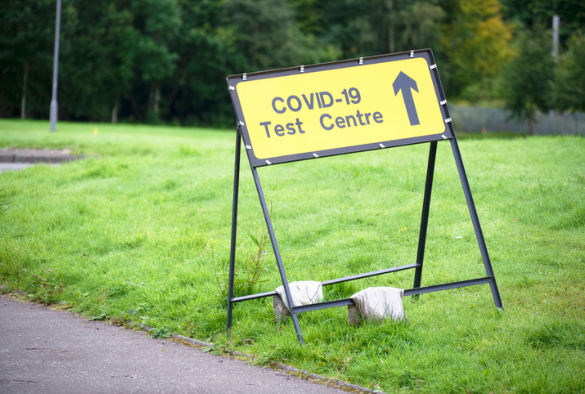
A study by the University of Liverpool has shown that while asymptomatic COVID-19 testing in Liverpool was popular, significant inequalities were evident between those who got tested and those who didn’t.
Published in the journal The Lancet Regional Health – Europe, the study found that 43% of residents aged over 5 years (n = 214 525) took up the offer of free testing for people without symptoms of COVID-19 between 6th November 2020 and 31st January 2021. A total of 1.3% of tests were positive, meaning that 5192 individuals who did not know they had the virus were notified of the need to self-isolate, potentially breaking chains of transmission.
However, the research identified significant inequalities in who got tested. It found that uptake was lower in the most deprived areas of the city located in North Liverpool (from Everton across to Walton) with 32% of people getting tested compared to 53% of people in the least deprived areas such as Woolton and Allerton. It also found that there was lower uptake of testing amongst Black, Asian and other non-White ethnic groups, and areas classified with high digital exclusion.
In addition, these groups were also more likely to have tested positive for COVID-19. Lateral flow testing found more positive cases in the most deprived areas with 1.74% cases positive in the most deprived compared to 1.04% of tests in the least deprived areas. Among Black groups this was 1.96% and among other non-White ethnic groups it was 3.28% compared to 1.27% in White groups.
The Liverpool ‘mass testing’ pilot in November 2020 was the first of its kind in the World, designed to evaluate a programme providing free, drop-in voluntary testing for COVID-19 to all residents over the age of 5 years without symptoms in a large city. Findings from the pilot have gone onto inform the national roll-out of testing across the UK and strategies in other countries including the US.
Dr Mark Green, lead author of the paper, said: “The response in Liverpool towards getting tested during the ‘mass testing’ pilot was brilliant and we thank the people of Liverpool for helping to make it a success.
“Demand for testing was also particularly high after the pilot finished with long queues just before Christmas, as well as into the January lockdown. However, significant inequalities were evident across Liverpool in who did and didn’t get tested. Those communities and populations who have been most affected by COVID-19 were also less likely to get tested. Learning how to effectively minimise inequalities in testing behaviours, including the mechanisms and barriers underpinning the relationships we identify, is critical if we are going to be able to effectively manage COVID-19 and future pandemics.
“We also found strong digital inequalities in testing patterns, with areas that were less confident in using the Internet also having lower uptake.”
Professor Matt Ashton, Director of Public Health for Liverpool, said: “This paper demonstrates how important it is to consider inequalities in both the design and delivery of local and national public health interventions.
“Despite a strong comms and engagement strategy, and specific mitigation measures designed to encourage uptake in our most disadvantaged communities, there was still a significant difference in testing uptake across different communities in Liverpool. In particular it is essential to consider financial barriers to access alongside physical barriers to access, many of which may require additional financial support.”
Professor Iain Buchan, Dean of the Institute of Population Health and lead for the evaluation of Liverpool community testing pilot, said “This research demonstrates why testing in a pandemic is much more than a technical exercise of implementing a test as if it were a clinical test in a hospital.
“Public health testing is a complex social and technical exercise, with important and expected inequalities to address. The lower uptake of testing and higher rates of infection among disadvantaged and BAME groups was predicted and responded to by our local public health teams who understand their communities. Locally-guided implementation of testing and nationally-backed financial support for those isolating on low incomes are important.”
The authors of the paper make several recommendations including making sure test site locations were accessible and walkable, ensuring non-digital routes for testing, communicating about the benefits of testing beyond the Internet, and providing sufficient financial support to allow low-income groups to isolate so that they feel comfortable getting tested.
The paper ‘Evaluating social and spatial inequalities of large scale rapid lateral flow SARS-CoV-2 antigen testing in COVID-19 management: An observational study of Liverpool, UK (November 2020 to January 2021)’ (doi.org/10.1016/j.lanepe.2021.100107) is published in The Lancet Regional Health – Europe.